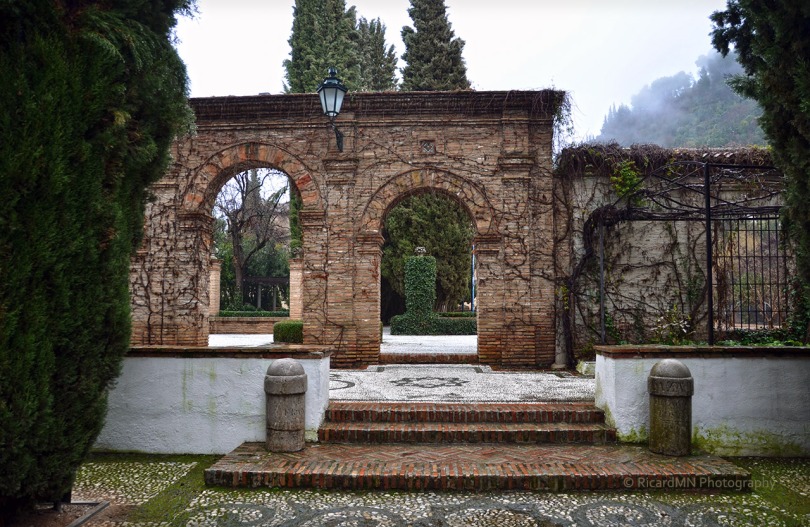View of the Alhambra from the Mirador de San Nicolás in the Albayzin of Granada, Spain.
The Alhambra is a palace and fortress complex located in Granada, Andalusia, Spain. It was originally constructed as a small fortress in 889 and then largely ignored until its ruins were renovated and rebuilt in the mid 11th century by the Moorish king Mohammed ben Al-Ahmar of the Kingdom of Granada who built its current palace and walls, and later converted into a royal palace in 1333 by Yusuf I, Sultan of Granada.
The Alhambra’s Islamic palaces were built for the last Muslim emirs in Spain and its court of the Nasrid dynasty. After the Reconquista by the Reyes Católicos (“Catholic Monarchs”) in 1492, some portions were used by Christian rulers. The Palace of Charles V, built by Charles V, Holy Roman Emperor in 1527, was inserted in the Alhambra within the Nasrid fortifications. After being allowed to fall into disrepair for centuries, the Alhambra was rediscovered in the 19th century by European scholars and travelers, with restorations commencing. It is now one of Spain’s major tourist attractions, exhibiting the country’s most significant and well known Islamic architecture, together with 16th-century and later Christian building and garden interventions. The Alhambra is a UNESCO World Heritage Site, and the inspiration for many songs and stories.
Moorish poets described it as “a pearl set in emeralds,” in allusion to the colour of its buildings and the woods around them. The palace complex was designed with the mountainous site in mind and many forms of technology were considered. The park (Alameda de la Alhambra), which is overgrown with wildflowers and grass in the spring, was planted by the Moors with roses, oranges and myrtles; its most characteristic feature, however, is the dense wood of English elms brought by the Duke of Wellington in 1812. The park has a multitude of nightingales and is usually filled with the sound of running water from several fountains and cascades. These are supplied through a conduit 8 km (5.0 mi) long, which is connected with the Darro at the monastery of Jesus del Valle above Granada.
Washington Irving’s “Tales of the Alhambra” is a collection of essays, verbal sketches, and stories. Irving lived in the palace while writing the book and was instrumental in reintroducing the site to Western audiences.
Alhambra has directly inspired musical compositions as Francisco Tárrega’s famous tremolo study for guitar “Recuerdos De La Alhambra”.
In pop and folk music, Alhambra is the subject of the Ghymes song of the same name. The rock band The Grateful Dead released a song called “Terrapin Station” on the 1977 album of the same name. It consisted of a series of small compositions penned by Robert Hunter and put to music by Jerry Garcia; a lyrical section of this suite was called “Alhambra”.
Marcel L’Herbier’s 1921 film “El Dorado” features many scenes shot in and around the Alhambra palace. This was the first time permission had been granted for a film company to shoot inside the Alhambra palace and L’Herbier gave prominent place to its gardens, fountains and geometric architectural patterns, which became some of the film’s most memorable images.
Prints/greeting cards/phone cases – RicardMN Photograpy’s Facebook Page – RicardMN Photography’s Pinterest
alhambra art – building photos – building canvas prints – color photos – skyline canvas prints





